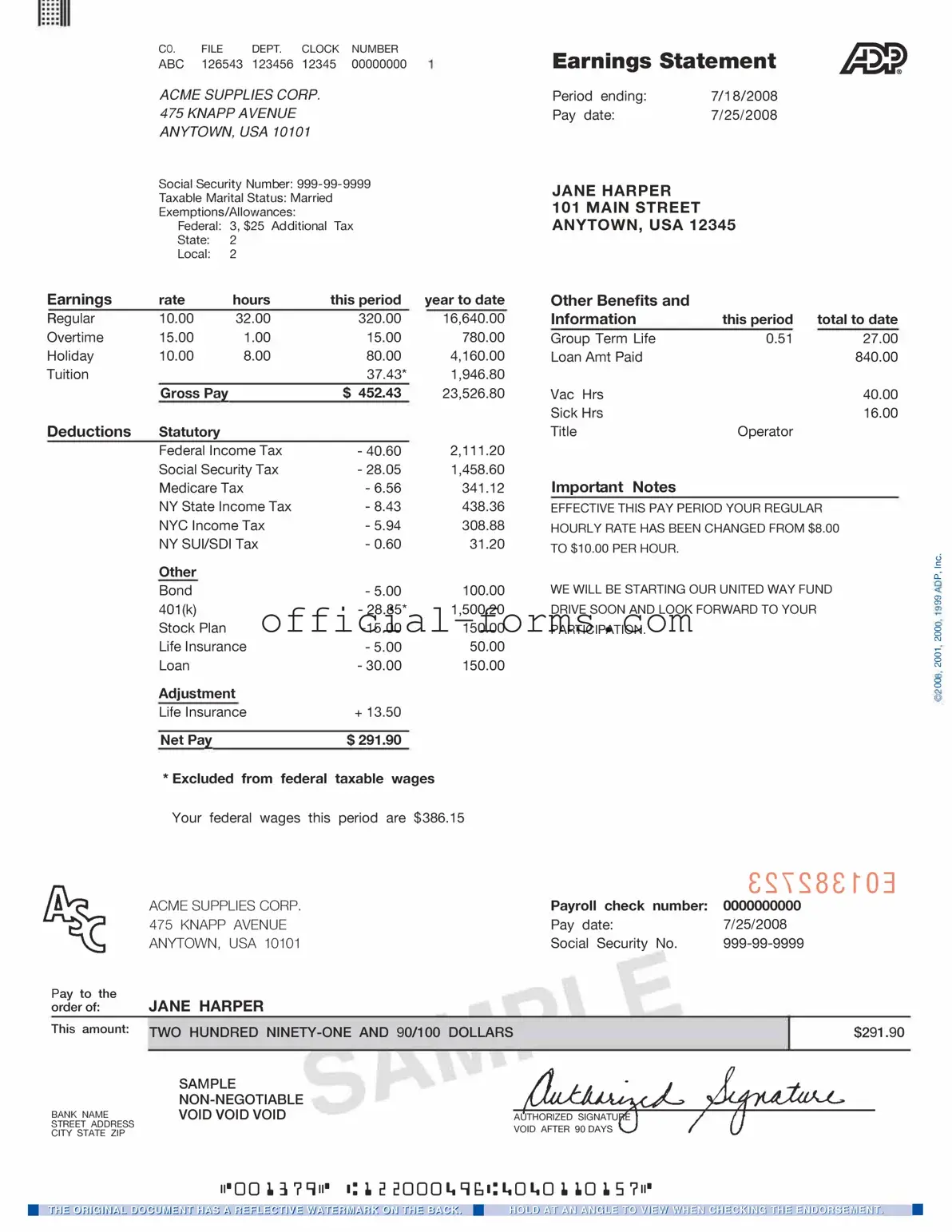When filling out the ADP Pay Stub form, many people make common mistakes that can lead to confusion or even issues with their pay. One frequent error is not double-checking personal information. This includes your name, address, and Social Security number. A simple typo can cause significant problems, so take a moment to ensure everything is accurate.
Another mistake is overlooking the pay period dates. Each pay stub should clearly state the start and end dates of the pay period. If these dates are incorrect, it can affect your paycheck and create discrepancies in your records. Always verify that the dates align with your work schedule.
Many individuals also forget to review their deductions. This could include taxes, health insurance, and retirement contributions. If you see something that doesn’t look right, it’s essential to address it immediately. Ignoring these deductions can lead to surprises when tax season rolls around.
Some people fail to account for overtime or bonuses. If you worked extra hours or received a bonus, make sure these are accurately reflected on your pay stub. Missing this information can lead to underpayment, which is frustrating and can affect your finances.
Additionally, not keeping a copy of your pay stub is a common oversight. It’s crucial to maintain records for your own reference, especially for budgeting or tax purposes. If you need to resolve a pay issue later, having a copy can make the process much smoother.
Lastly, many individuals do not ask questions when they are unsure about something on their pay stub. If you see something confusing or unclear, don’t hesitate to reach out to your HR department or payroll service. They are there to help you understand your pay and ensure everything is correct.
